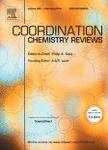版权所有:内蒙古大学图书馆 技术提供:维普资讯• 智图
内蒙古自治区呼和浩特市赛罕区大学西街235号 邮编: 010021

作者机构:Xian Univ Architecture & Technol Sch Environm & Municipal Engn Shaanxi Key Lab Environm Engn Xian 710055 Shaanxi Peoples R China Xi An Jiao Tong Univ Sch Life Sci & Technol Inst Analyt Chem & Instrument Life Sci Key Lab Biomed Informat EngnMinist Educ Xian 710049 Shaanxi Peoples R China Monash Univ Dept Chem Engn Clayton Vic 3800 Australia
出 版 物:《COORDINATION CHEMISTRY REVIEWS》 (配位化学评论)
年 卷 期:2021年第445卷
页 面:214086-214086页
核心收录:
学科分类:081704[工学-应用化学] 07[理学] 08[工学] 0817[工学-化学工程与技术] 0703[理学-化学] 070301[理学-无机化学]
基 金:National Postdoctoral Program [2020M673356] National Natural Science Foundation of China Key Research and Development Program of Shaanxi [2021GY-225] Natural Science Foundation of Shaanxi Province of China [2021JQ-503] Special Scientific Program of Education Department of Shaanxi Provincial Government [20JK0725]
主 题:Mesoporous materials Semiconducting metal oxide Metal-organic framework Chemiresistive gas sensor Self-template synthesis
摘 要:Chemiresistive gas sensors based on semiconducting metal oxides (SMOs) have been widely used in medical diagnosis, industrial production and aerospace vehicles. It s challenging to develop gas sensor with high selectivity and low working temperature. Recently, metal-organic frameworks (MOFs) derived SMOs have been regarded as a promising candidate for developing high-performance gas sensors owing to their mesoporous structure, unique morphology, tunable architectures and compositions. Great progresses have been made in design and synthesis of SMOs with different nanostructures and compositions using MOFs as a precursor. However, there are few reviews to summarize the progresses of this fast-growing area. In this review, we systematically summarize the recent developments in the field of MOFs-derived mesoporous SMOs with different architectures and compositions for gas sensing application. In particularly, the influence of structure and composition of SMOs on the sensing performance in terms of sensitivity, selectivity, response/recovery speed and working temperature are summarized. Strategies including constructing novel nanostructures, building heterojunctions, decorating with noble catalysts and combining with highly-conductive materials for enhancing the sensing performance are discussed in this review. Furthermore, the current challenges and prospects in the application of MOFs-derived mesoporous SMOs for sensing application are proposed. This review may provide a guideline for rational design and development of high-performance gas sensors using MOFs-derived SMOs. (C) 2021 Elsevier B.V. All rights reserved.